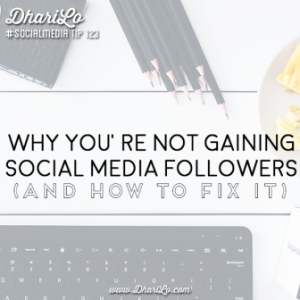And yes, mixed and augmented reality, and even virtual reality, are part of the customer experience & digital experience moving forward.
Marketers will be engaging with more customers in three-dimensional virtual spaces next year. As the virtual ecosystem evolves, it won’t be limited to a single technology or walled garden. The rush to produce 3D experiences for consumers is already underway and set to mature in the coming year.
Shubham A. Mishra, CEO and Co-Founder of codeless AI infrastructure tech company Pyxis One, calls out VR and AR as the “next big things.”
“We are witnessing an increased pace of acquisitions of VR and AR startups, so it’s going to be interesting to see if, and how, brands incorporate AR into their marketing strategy,” Mishra said.
Connected metaverse
In 2021, the parent company formerly known as Facebook put all its weight behind a virtual reality experience for relationship building and customer engagement. It also rebranded its consumer Oculus VR headsets as Meta Quest.
All the while, marketers who were well aware of the skyrocketing advertising rates on Facebook (Meta’s flagship social network) could see history repeating itself, as bricks were being laid for another walled garden, a virtual one which, instead of “metaverse,” could be more accurately described as a “Zuckerverse” after Facebook founder Mark Zuckerberg.
But, what if the Facebook people don’t get to monopolize the VR ecosystem? What if, instead of one metaverse, there are many connected metaverses? This is how Tony Zhao, Co-Founder and CEO of video developer platform Agora, sees the virtual-scape shaping up next year.
“The way current metaverses are set up isolates each on their own digital island,” said Zhao. “But next year, real-time engagement technology will enable connectivity between metaverses and create a more connected and engaging experience for users. It will also reduce the barrier to entry by simplifying access to the metaverse to something as ubiquitous as a web browser.”
Real-time engagement
Virtual and hybrid conferences are here to stay. What will keep virtual attendees connected in both virtual and real-world environments is real-time engagement (RTE).
Zhao sees RTE applying to a growing number of metaverses, gaming experiences and data transmissions.
“These industries will embrace RTE and extend its capabilities well into the future,” he said, adding that “early adopters of live and interactive video and audio are app developers and digital-first companies.”
As we saw in other areas of marketing technology in the last year, RTE is likely to get a boost from the low-code and no-code movement.
“In 2022, we will see more and more traditional enterprises adopting real-time engagement technology, thanks to the rise of no-code and low-code tooling,” said Zhao. “No-code and low-code tooling will empower enterprise agility, quicker development turnaround times, and accelerate business outcomes.”
Virtual and in-person conference experiences
The Omicron variant that emerged at the end of 2021 indicated that the COVID-19 pandemic will continue to be a concern for in-person events, calling on digital solutions to keep customers engaged.
“As the pandemic continues, we will transform how events are consumed both in-person and virtually,” said Zhao.
He added, “More and more robots will traverse the conference floors providing ‘on-the-ground’ information and visuals to viewers around the world. Drones will stream information from above audiences, offering even greater real-time experiences, sending streams from above and on the floor to people all over the world who will participate with greater human-to-human connections than we’ve ever seen.”
Micro-communities
Human-to-human connections also proliferate in digital communities, and this has been the case since the earliest days of the web. Brands are discovering that smaller groups can make a bigger impact on individual consumers and build stronger engagements among micro-communities. This community building at the micro-level will grow stronger next year.
“Expect to see more brands build micro-communities around their products to offer consumers genuine and meaningful experiences in the virtual and real world,” said Philip Smolin, Chief Platform Officer for 100.co, a new AI-powered marketing platform focused on CPG brands. “This will foster a collaborative relationship between brands and customers. So, instead of spying on consumers through cookies, brands can simply ask consumers for feedback and offer them recommendations based on their likes and dislikes.”
According to Smolin, brands use digital engagement not just to provide easier discovery and buying options since they’re not just selling a product. “They’re successfully building a community of like-minded consumers…[and] this can even segue into the real world, where post-Covid consumers will crave more experiential events at stores and malls,” he explained.
A key feature of the new year’s customer engagement is that it won’t matter whether it’s online or out in the real world. The successful customer journey will always be underpinned by some kind of digital architecture.
Hard turn to mobile and text
For retail brands, digital technology increasingly will be used to unlock value from a brand’s physical store footprint.
“Don’t give up on brick-and-mortar just yet,” said Michael Osborne, President of messaging and notification engine Wunderkind. “Physical locations support online shopping habits by giving consumers the chance to touch products in real life. This can drive overall sales, even if stores themselves are not producing revenue.”
When shoppers are in-store, they still have their phones on them, and that’s where the mobile strategy becomes even more relevant to the customer experience.
“A mobile strategy has been proven to be more popular with consumers, to give immediate opportunity to pursue action (e.g., sending a product link via text),” Osborne said. “The accessibility to consumers while they are on-the-go is key to being able to market amidst active and busy consumer behaviors.”
He calls personalized texts and emails, which can be accessed by a shopper in-store or at-home, “the difference between a modern vs. a traditional marketing approach.”
Relevant messaging that uses the first-party data customers are sharing with a brand through purchases and other channels can boost ROI when they get a truly useful and personalized texts. These mobile and SMS communications will only increase next year.
“Data based on consumer shopping habits and patterns help create tailored messaging for meaningful consumer-retailer engagement,” Osborne explained. “The need and use of tangible marketing metrics and measurable ROI to boost revenue pinpoint the categories consumers are more fond of, for individualized messaging.”
Changing of the guard
Marketers were working long hours last year in an effort to boost their SMS strategies. This sets the stage for a takeover in 2022, as digital non-native consumers have transformed their habits to digital and mobile-first.
“There is no doubt the pandemic accelerated digital adoption,” said Chris Bauserman, Vice President of Marketing for cloud-based experience platform NICE CXone. “In almost two years, non-digital natives have become more digitally fluent. And as such, demand for more digital customer service touchpoints that help these consumers and their specific needs has increased.”
Bauserman contends that in 2022, digital transformation will become generation-less.
“With more digital savvy consumers within all generational groupings, brands will be able to usher in a much larger digital component with both mobile and self-service finally able to take precedence,” Bauserman said.
The post 2022 Predictions: Customer Experience & Digital Experience appeared first on MarTech.
MarTech(32)








